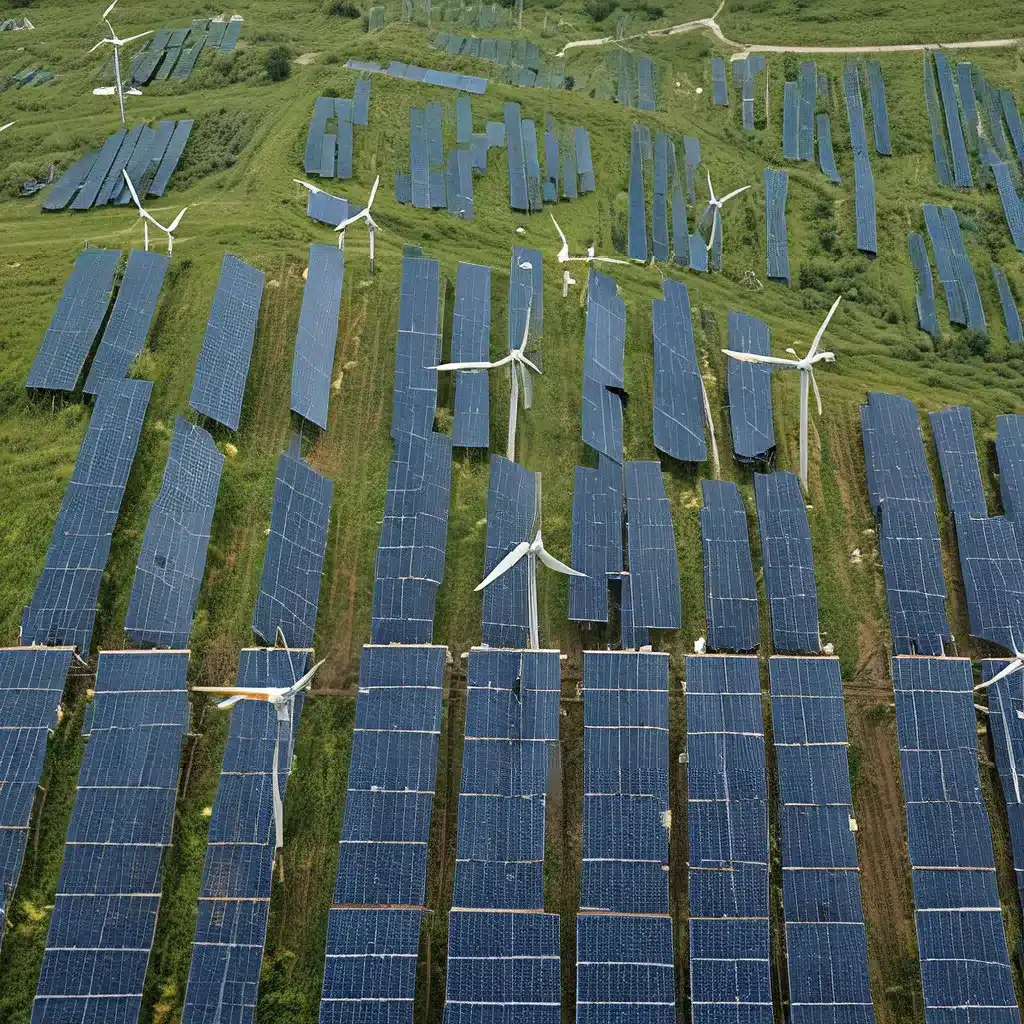
Powering Through the Storms: Ensuring Grid Reliability in an Era of Climate Change
As I gaze out the window, I can’t help but feel a sense of unease. The winds are howling, and the rain is pounding against the glass – a stark reminder of the unpredictable nature of our weather these days. It’s no secret that climate change has taken its toll on our power grid, with natural disasters causing more frequent and severe disruptions than ever before.
But you know what they say – when life gives you lemons, you make lemonade. And that’s exactly what the Biden-Harris Administration is doing. With their Investing in America agenda, they’re making the largest electric grid infrastructure investment in history – over $30 billion from the Bipartisan Infrastructure Law and Inflation Reduction Act. This unprecedented commitment is poised to transform the way we power our homes, businesses, and communities.
Fortifying the Grid: Strengthening Transmission and Renewables
Let’s dive a little deeper, shall we? One of the key focuses of this investment is expanding capacity and unlocking renewable energy resources. By supporting the development of thousands of miles of new and upgraded transmission lines, the administration is creating a more resilient and efficient grid that can handle the growing demand for clean energy.
And it’s not just about the physical infrastructure. The Department of Energy has also released the final National Transmission Needs Study, which provides valuable insights into where the grid could benefit from increased transmission. This will help guide the strategic deployment of these critical upgrades, ensuring that they’re directed where they’re needed most.
But the story doesn’t end there. The administration is also investing heavily in grid hardening – strengthening critical transmission lines, hardening electric poles with sturdier materials, and improving flood mitigation. These measures will help ensure that communities don’t lose power when the next big storm rolls in, and that outages don’t last as long when they do occur.
Renewable Resilience: Microgrids and Energy Efficiency
And let’s not forget about the role of renewable energy in all of this. The Biden-Harris Administration is working to accelerate the deployment of microgrids – self-contained, local power systems that can continue to operate even when the main grid is affected by an extreme weather event. This means that communities can keep the lights on and the essential services running, even in the face of a major disaster.
But it’s not just about flashy new tech. The administration is also focused on improving energy efficiency across the board. By investing in projects that reduce greenhouse gas emissions and lower costs for families and small businesses, they’re creating a win-win situation – a cleaner, more affordable energy future for all.
The Puerto Rico Example: Lessons in Resilience
Speaking of resilience, let’s take a look at the story of Puerto Rico. When Hurricanes Irma and Maria devastated the island in 2017, it led to one of the longest blackouts in US history, with some residents going without power for nearly a year. It was a stark reminder of the urgent need for grid modernization and resilience.
But the Biden-Harris Administration hasn’t been sitting idly by. They’ve teamed up with the Department of Energy, Department of Homeland Security, and Department of Housing and Urban Development to accelerate the work of strengthening Puerto Rico’s grid and advancing new initiatives to enhance the island’s energy future. This includes the Puerto Rico Grid Recovery and Modernization Team, which is providing technical assistance, tools, and modeling support to help the island plan and operate its electric system with greater resilience.
And the investments don’t stop there. The administration has also announced the Puerto Rico Energy Resilience Fund, a $1 billion initiative to improve the resilience of the island’s electric grid, with a focus on reaching and supporting its most vulnerable residents. This includes incentivizing the installation of residential rooftop solar PV and battery storage systems, as well as providing consumer protection and education to ensure long-term sustainability.
The Road Ahead: Challenges and Opportunities
Now, I know what you might be thinking – this all sounds great, but what about the challenges? After all, transforming the nation’s energy infrastructure is no easy feat. And you’d be right to be skeptical. There are certainly hurdles to overcome, from navigating the complex web of regulations and permitting processes to securing the necessary funding and public support.
But the Biden-Harris Administration isn’t backing down. They’re accelerating transmission by modernizing permitting and advancing next-generation planning. They’re also working to mitigate the risk of wildfires, investing in projects that move overhead power lines and remove hazardous trees. And they’re not just throwing money at the problem – they’re leveraging the expertise of the Department of Energy’s national laboratories to provide technical assistance and develop innovative solutions.
At the end of the day, the grid of the future is going to be more resilient, more efficient, and more sustainable than ever before. And that’s not just good for the environment – it’s good for our wallets, our communities, and our way of life. So let’s embrace the challenge, roll up our sleeves, and get to work. After all, when it comes to powering our homes and businesses, Firewinder is here to help every step of the way.
Conclusion: Powering Ahead with Resilience and Innovation
As I look out the window, the storm seems to have passed. The sun is peeking through the clouds, and I can’t help but feel a glimmer of hope. The Biden-Harris Administration’s historic investment in our nation’s electric grid is more than just a policy initiative – it’s a testament to the power of innovation, resilience, and a shared vision for a brighter, more sustainable future.
So let’s embrace the challenge, work together, and build the grid of tomorrow. Because when it comes to powering our lives, resilience is not just a buzzword – it’s a necessity. And with the right policies, partnerships, and a whole lot of determination, I know we can make it happen.

